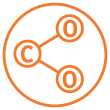Household waste recovered or recycled
Key Finding
The amount of household waste recovered by councils during 2014–15 to 2018–19 averaged 818,000 tonnes per year.
Household waste (municipal solid) is waste generated by domestic activities. It includes waste collected from households via kerbside services, from public place bins, or self-hauled by residents to council facilities.
The main components of recovered household waste are green waste, paper and packaging and items salvaged from domestic self-haul.
About 310,000 tonnes of paper and packaging (cardboard, glass and plastic containers, and steel and aluminium cans) were sent for recycling by councils in 2018–19, down from a peak of about 340,000 tonnes in 2017–18.
More information:
Relevant Sustainable Development Goals’ targets
Download data from Queensland Government data
Metadata
Household waste sent for recovery from 2007–08 to 2018–19 financial year. This includes kerbside waste recovered via alternative waste treatment, paper and packaging picked up via the kerbside recycling collection and public place bins, green waste recovered by local governments, and other large items salvaged by tip shops or similar. Regional groupings are combinations of local government areas.









